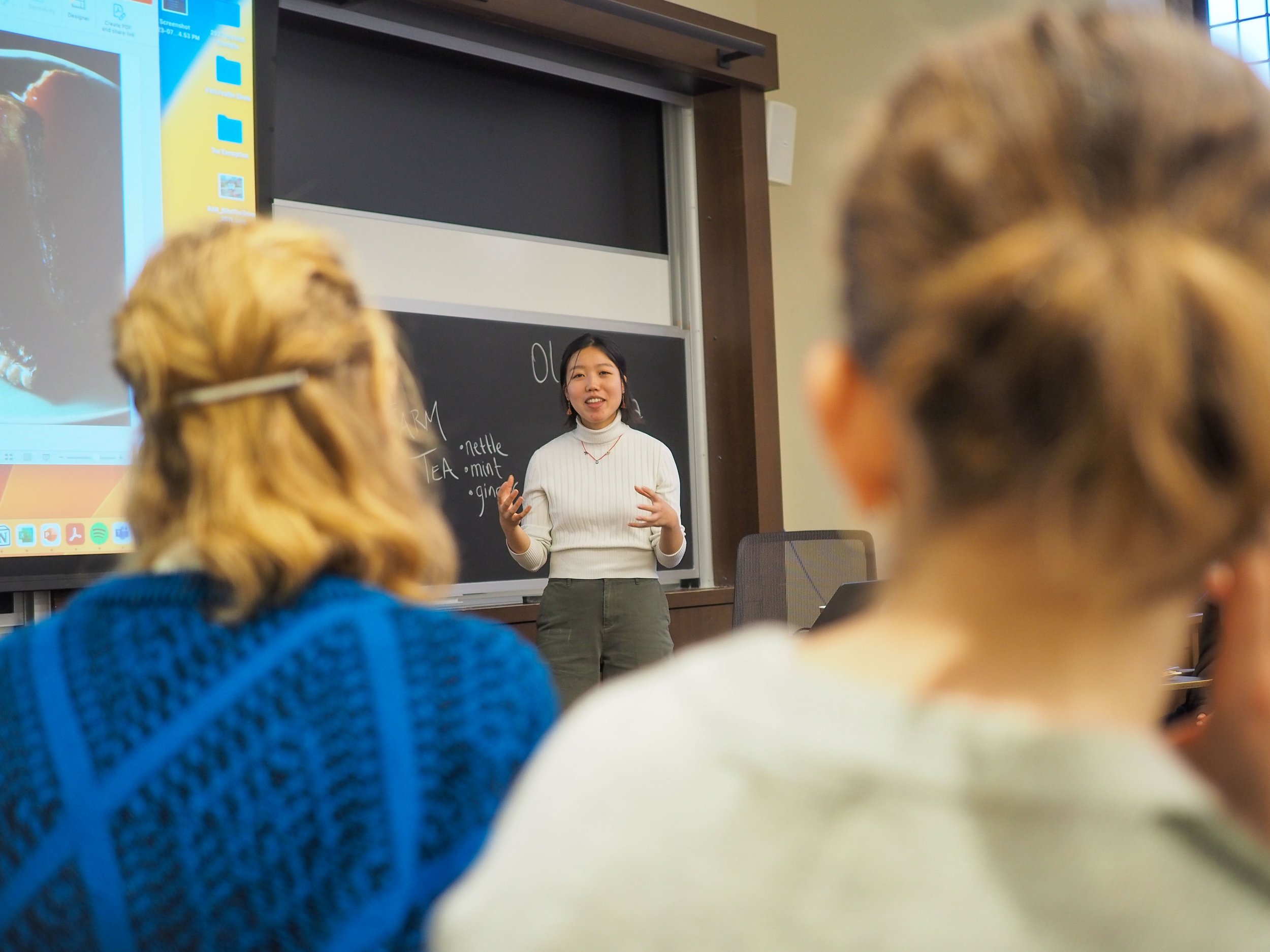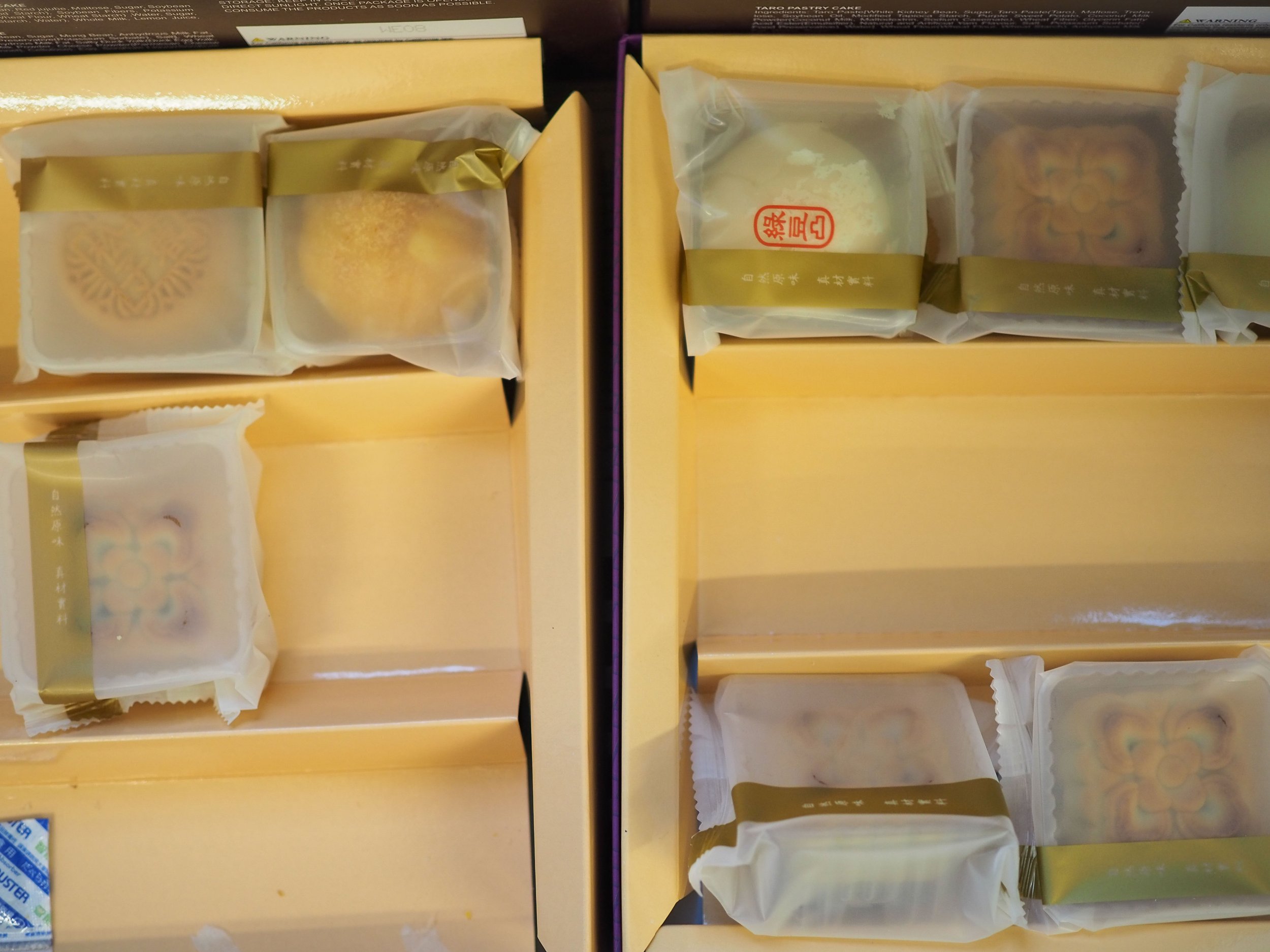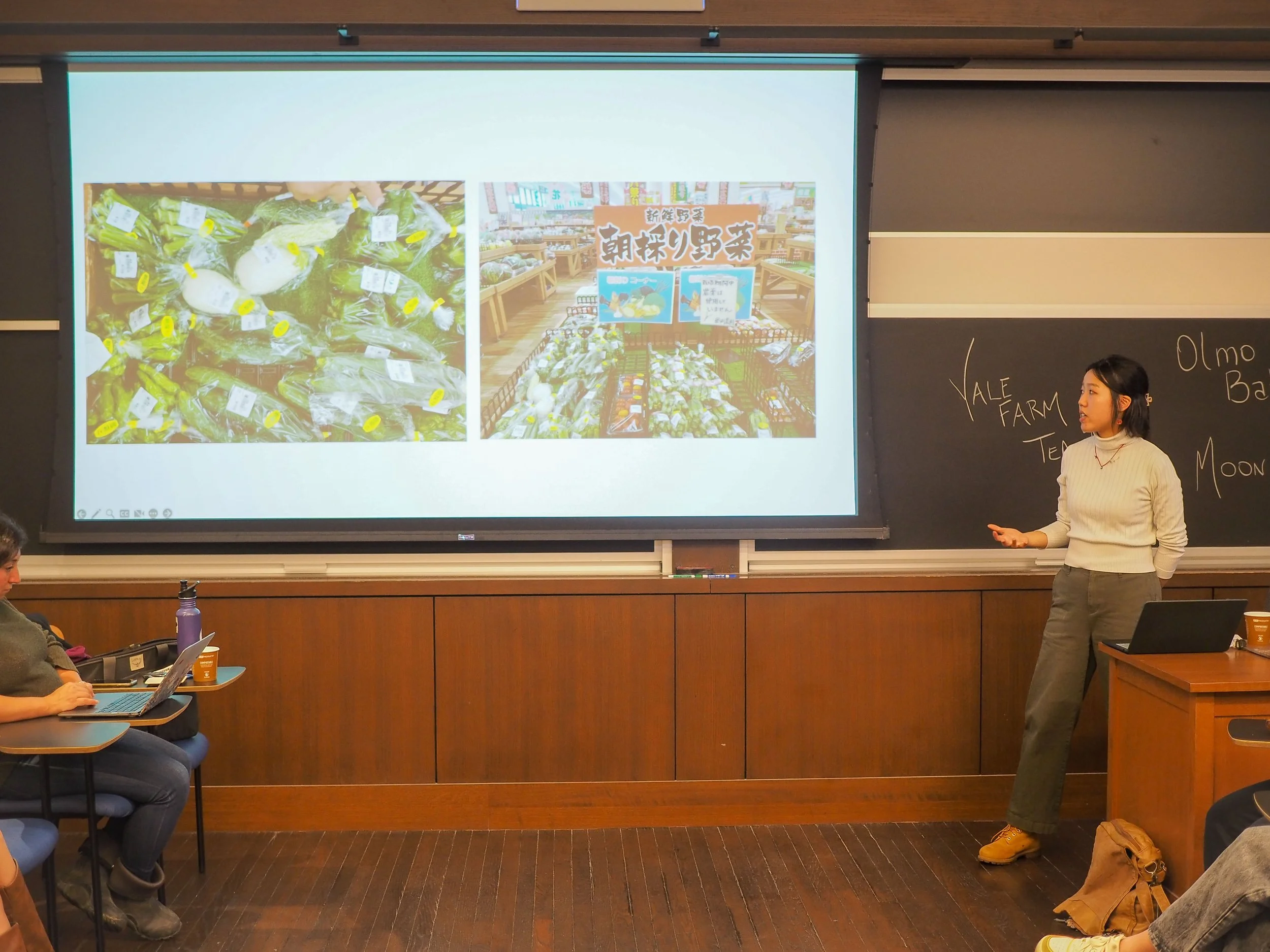


Last Friday brought 3.8 inches of rain to the Old Acre, but the rain and wind couldn't keep YSFP-ers away from last week's indoor knead2know. Dozens of students braved the blustery weather to attend the Friday talk by Global Food Fellow Mao Shiotsu '24, who spent the summer in Japan exploring the country's fine dining.
Previously, Shiotsu took a gap year to study pastry and cuisine in France. After three months of culinary school, she worked in the fine dining restaurant Georges Blanc. “I started thinking a lot about restaurant culture, how dishes are made,” Shiotsu recounted. Contrasting her time in France with her upbringing in Japan, she said, “I started thinking about the differences between the priorities in the dish.”
Over the course of the summer, Shiotsu spoke to chefs and farmers in many different regions and styles of Japanese cuisine, from the Michelin-starred Muromachi Wakuden in Kyoto to family farms in the countryside of Nara. Everywhere she visited, she was struck by the emphasis on simplicity and local ingredients. In Japan, “a dish with one ingredient can be fine dining” — a sentiment that Shiotsu’s Italian and French colleagues didn’t share. Although those European countries prize their local produce, they place more of an emphasis on the individual chef’s artistry, creativity, and storytelling, Shiotsu said. This is evident in everything from the level of decoration on the plate to the way restaurants are named: in Japan, it’s very uncommon to name a restaurant after the head chef. By comparison, Shiotsu observed that Japanese chefs see themselves as elevating nature, presenting ingredients in the way that best draws out their inherent beauty. As one Japanese chef told her, “Japanese cuisine is not an art, because in art, the artist is the main character.”
Shiotsu also noticed differences between the two country’s approaches to food waste. In the Japanese restaurants Shiotsu visited, nothing was wasted. Food was sourced from the restaurant’s own gardens or from neighbor’s farms, and anything that wasn’t served to guests would be eaten by staff. At French restaurants, Shiotsu recalled, the chefs often made more meals than they needed and discarded them at the end of the night.
The discussion gave students plenty to chew on both literally and figuratively, as they enjoyed moon cakes and babka and sipped tea made with the Farm's nettles, ginger, and mint. And there will be much more to ruminate on next week as our knead 2 knows continue with a presentation by Global Food Fellow Kavya Jain ’25.
Photos from the event by Reese Neal ’25 can be found here.
